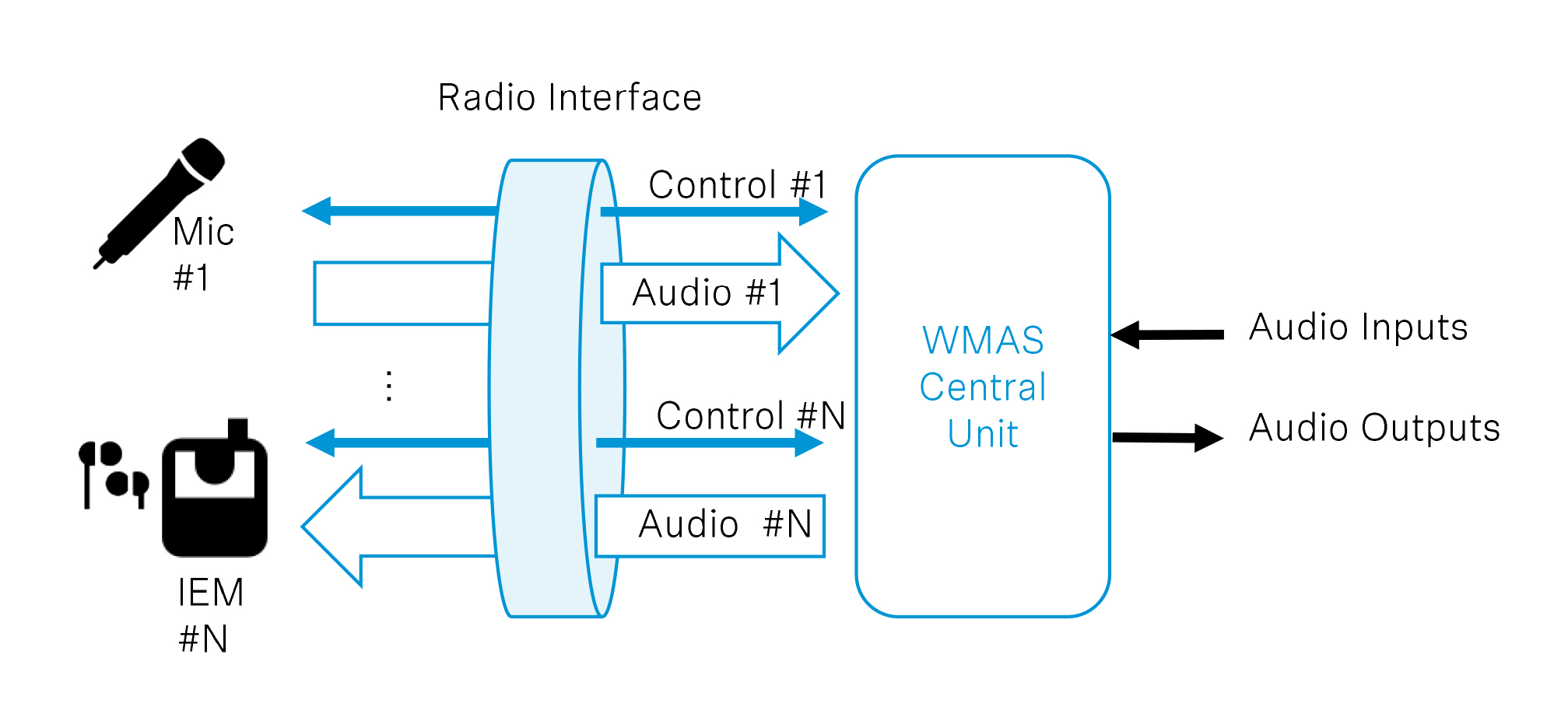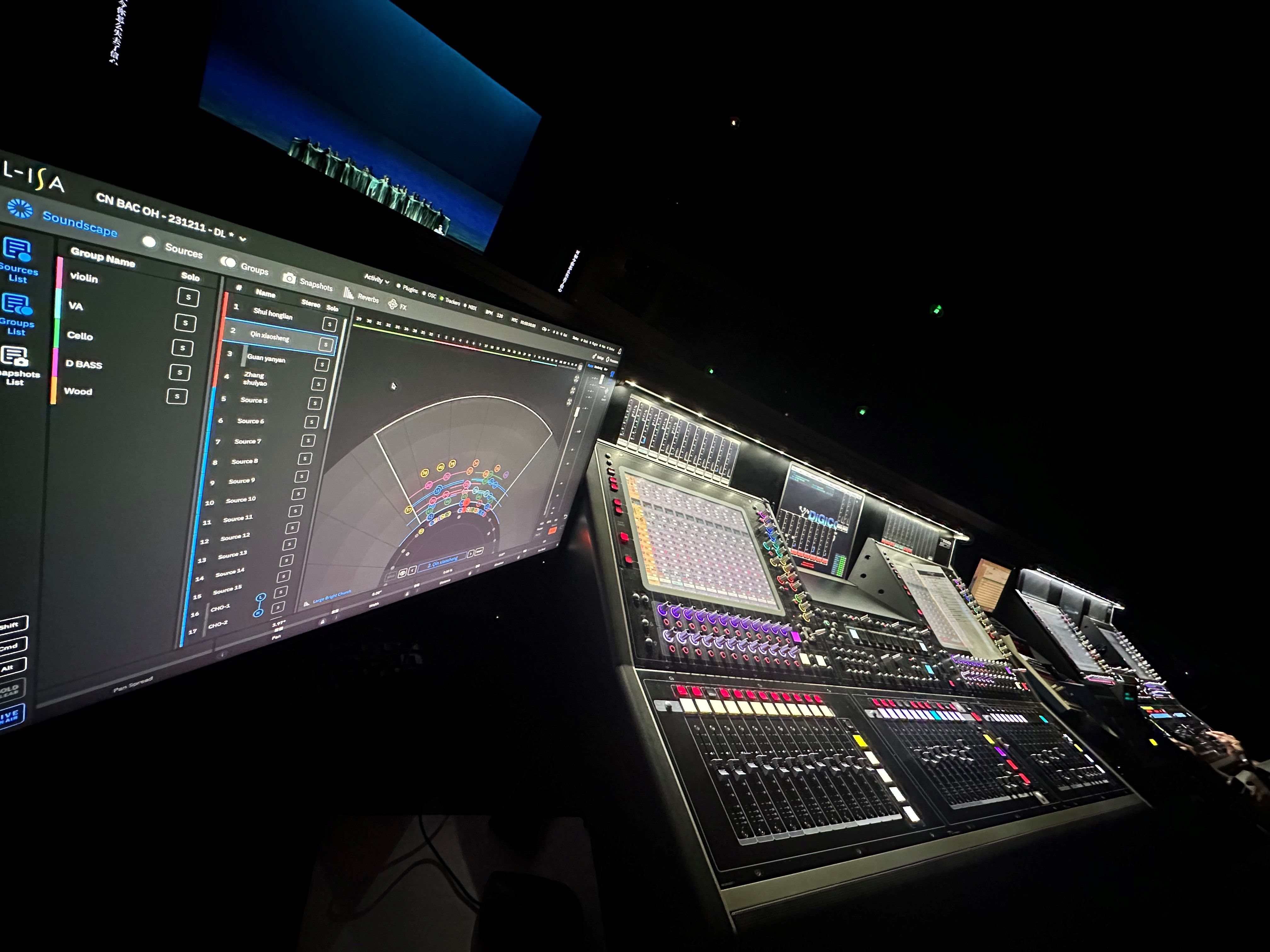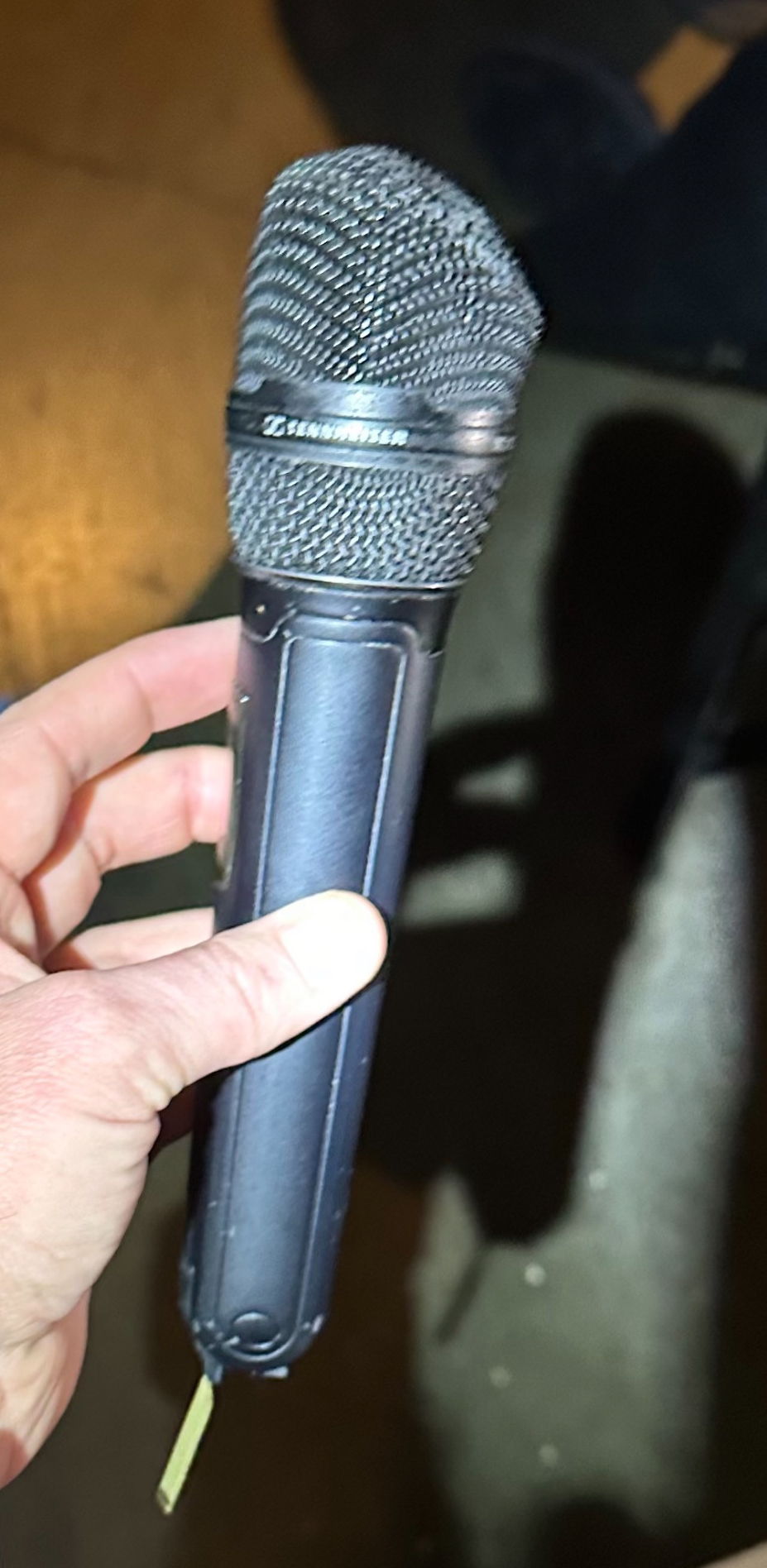Redundancy in Sennheiser’s Adaption of WMAS Technology
A technical paper by Dr Sebastian Georgi

Dr Sebastian Georgi is one of the system engineers for the WMAS system that is currently being developed by Sennheiser. For more than 10 years, he has been conducting research into wireless broadband techniques and how to specifically tailor them to professional audio applications. Georgi did his PhD thesis at Hamburg University of Technology in the field of OFDM. Georgi has a strong affiliation to music and plays the bassoon in a semi-professional orchestra in Hannover.
Introduction
Whenever game-changing technology is introduced, wherever unchartered technical territory is explored, “what if” questions and comparisons with conventional technology are the rule and not an exception. In our information sessions and talks with industry colleagues about Wireless Multichannel Audio Systems, or WMAS for short, we found “redundancy” to be a topic of particular interest.
Sennheiser’s WMAS technology implementation operates with one central rack-mount unit that handles many wireless mics and IEMs at the same time – instead of many individual transmitter-receiver and receiver-transmitter links with conventional narrowband technology. What if that central unit fails? Which redundancy options does Sennheiser’s WMAS implementation offer? This paper aims to answer these questions by taking a look at various operational scenarios and how Sennheiser’s implementation of WMAS will handle them.

Redundancy
In our technology context, redundancy means the doubling of various subsystems to ideally ensure operation without interruption, even when one subsystem fails. Therefore, when considering redundancy, all subsystems are evaluated for their probability of failure, and a decision is made to duplicate them or not.
An obvious solution to avoid a single point of failure in a technical system is to duplicate the entire system. Examples in pro audio would be duplicate mixing consoles, or a console with dual redundant engines, for major televised live audio events, or duplicate equipment racks at a broadcasting facility.

In the case of a wireless audio system this would mean building the entire wireless audio system twice, using different frequencies, separate power supply circuits, ideally generators, too, setting up the duplicate systems at some distance and so forth. However, from an economical point of view, this does not make sense for most practical applications.
Encryption
The WMAS technology developed by Sennheiser is connection-oriented. This means that a mobile device, such as a microphone transmitter or in-ear receiver, establishes a connection to the central rack-mount unit. This initial connection will be called pairing from here on. When a mobile device is paired to the central unit, an encryption key is exchanged. Then it can be coordinated using a permanent remote control channel within the same bidirectional RF (radio frequency) channel that is used for audio transmission.
This implies that using a second receiver for listening in onto the same RF signal – which is often done today as a sort of safety net – will not be possible anymore. However, it is worth noting that this option will also disappear for legacy narrowband wireless audio systems, as a regulatory requirement to encrypt personal data such as audio will be mandatory in the EU starting 2025.
Redundancy scenarios with Sennheiser’s WMAS technology
Let us now take a look at various fault scenarios and how they can be handled with Sennheiser’s implementation of WMAS.
RF interference
Scenario:
Interference appears on an RF frequency, for example caused by uncoordinated wireless audio systems being switched on without checking frequency availability. Another potential cause can be non-audio devices emitting unwanted RF signals in the TV UHF frequency range.
Countermeasure:
Sennheiser’s WMAS technology implementation will offer permanent scan functionality even during operation. All WMAS devices, be it mobile devices or stationary antennas, continuously monitor and measure the used RF spectrum (so-called distributed spectrum sensing). This data is used to report detected interference to the operator and help him or her to react dynamically to the situation. Field tests have shown that WMAS is able to work around a few interferers – this will give the operator crew at a live event enough time to track the source of interference and have it switched off.
If interference in the allocated TV channel is massive, i.e. several interferers are active in this particular RF channel and it may not be possible to maintain operation, the RF channel can be changed within seconds. Mobile devices do not need to be paired again. They will initiate a brief search, and then detect the relocated carrier. This will cause a short audio interruption of a few seconds – which is nothing if you consider how much time it would take to reprogram several narrowband receivers and associated transmitters. Alternatively, when communication with the mobile devices is still possible to some extent, a frequency change command can be issued over the permanent remote-control channel. This procedure will reduce the time of audio interruption.

Broken cable
Scenario:
In general, wireless audio requires many cables on the rack-mount side. Besides the obvious power cords and cables for remote antennas, there are cables for audio networks such as Dante, or for connections over MADI (Multichannel Audio Digital Interfaces). Each of these cables could be damaged or get accidentally unplugged.
Countermeasure:
All audio connections can be made redundant in Sennheiser’s implementation of WMAS technology.
Multiple antennas operating on the same RF channel would not only serve to extend the coverage area, but could also compensate for a “lost” antenna: Should an antenna cable get disconnected, another antenna could take over without any audible audio artifacts, provided that the mobile devices are within its coverage area. Therefore, overlapping antenna zones will offer redundancy, and although WMAS only needs a single antenna for the central unit in many scenarios, RF managers might consider adding an extra one anyway.
A temporary loss of control network connection to the central unit would not cause any audio interruption. Regarding the power cable, separate power supply units and separate power cables could be an option.
Control PC failure
Scenario:
A laptop or desktop computer will be necessary for configuring and monitoring the system before and during a production. This PC could fail.
Countermeasure:
Like with the cable break scenario, the technology would allow for a production to continue when the control PC fails. The operator could connect a replacement computer to the WMAS central rack-mount unit and upload the production data onto a new control PC. This would take over all functions of the failed device.
Faulty Mic
Scenario:
Mobile devices can get damaged during rough stage use. Lavalier mic capsules can get clogged up by sweat or makeup.
Countermeasure:
Just as today with conventional narrowband systems, spare devices would be paired to the central unit. These can replace any faulty mobile devices.

Failure of the WMAS central rack-mount unit
Scenario:
What to do in the unlikely case that a central unit fails? Although a fault is highly improbable, there may be critical applications, where system redundancy is key.
Countermeasure:
The technology would allow for the configuration of a second central unit, which could take over all connections from its sister central unit. When implemented, the operator would copy the full configuration of the first central unit to a second one before a high-profile event. This would include the encryption key and all pairing information. If a need arises to switch to the backup central unit, this will be able to take over operation from the first unit. As described under “RF interference”, the mobile devices need to re-establish a connection to the new central unit, which would cause an interruption of several seconds. However, no pairing or reconfiguration will be necessary.
Conclusion
We will see products based on Sennheiser’s WMAS technology implementing redundancy options step by step. For many typical scenarios that require redundancy, the technology would be able to offer a solution that ensures operation without audible interruptions. In the unlikely event that an entire RF channel (which is 6 or 8 MHz wide) becomes inoperable due to interference, or a central rack-mount unit is failing, production could continue after a short interruption. If even short interruption is unacceptable, mirroring of the wireless audio system would always be an option, and with WMAS just using a compact central unit rather than a rack full of microphone receivers and in-ear monitoring transmitters, would be much easier to accomplish than with today’s narrowband systems.
[The End]
The images accompanying this technical paper can be downloaded here.